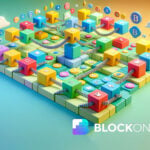It’s helpful sometimes to step back from the nitty-gritty of individual cryptocurrencies to look at the big picture. Blockchain technology promises to change many old technological and financial paradigms due to its uniquely transparent, immutable, and distributed structure.
These advantages can be classed into a few big categories. Tokenization is one of these; the blockchain has the ability to inject liquidity into previously illiquid or otherwise cumbersome markets.
We’re going to take a brief survey of the tokenization landscape and the three main asset classes that are likely to benefit from increased blockchain adoption.
TLDR
- Tokenization is the process of converting an asset into a digital token that can be moved or stored on a blockchain. This injects liquidity into previously illiquid markets.
- Key asset categories ripe for tokenization are intangibles like patents and copyrights, fungible assets like commodities, and unique non-fungible assets like famous artworks or real estate.
- Intangibles gain easier transferability and legitimacy via blockchain tokens representing their value. No need for cumbersome legal paperwork.
- Tokenizing fungible goods like oil and wheat enables precise tracking and instant exchanges without paperwork or intermediaries.
- Non-fungible artwork and property can be tokenized into “shares” allowing fractional ownership by more investors. Tokens prove authenticity and enable broader access.
Tokenization in a Nutshell
The first thing we have to discuss is what, exactly, tokenization is. Broadly speaking, tokenization is the process of converting some form of asset into a token that can be moved, recorded, or stored on a blockchain system.
That sounds more complex than it is. To put it simply, tokenization converts the value stored in some object – a physical object, like a painting, or an intangible object, like a carbon credit – into a token that can be manipulated along a blockchain system.
Bitcoin could be said to represent the tokenization of electrical use and computing power into a medium of exchange, for instance. This is a bit of an abstract example, but it gives us a base from which to work.
The main takeaway for our purposes is that a blockchain is a system or platform, and its structure permits the trading of items that don’t really lend themselves to easy trading. Moreover, it’s got numerous advantages over so-called traditional paper markets, particularly in terms of speed, security, and accountability.
Blockchain’s ability to tokenize assets is pretty much limitless, but it’s possible to group these assets into three broad categories. We’re going to look at them in order of innovation, or the blockchain’s ability to change the way traditional asset transfers are handled. These three categories are intangible assets, fungible assets, and non-fungible assets.
Intangibles
Intangibles are a natural for the world of blockchain because they don’t really exist, at least in the traditional sense. That might sound glib, but it’s true. Intangibles represent ideas or concepts, rather than physical goods, and so they more readily lend themselves to intangible markets – be they traditional paper markets or blockchain markets.
You’re probably familiar with most of the big intangibles. Copyrights, patents, brand recognition, and goodwill are prime examples.
One of the key things to remember about intangibles is that they don’t necessarily have an easy-to-peg value. What price would you put on the design for your new microchip? How about your unique business model? To get more specific, what’s the dollar value of Coke’s long-standing association with Christmas, polar bears and all?
These concepts, however, can be represented by a token or many tokens on a blockchain system. They can be assigned a unique identifier and then traded, gaining their value from the market.
Creating tokens for intangible assets gives them a solid backing for transfer and a secure guarantee of their legitimacy.
Moreover, there’s no need to store or physically move the intangible asset. Just how do you transfer an idea from one person to another, anyway, in a legal and financial sense? You can either sift through reams of notarized legal paperwork, or you can exchange a digital token with a unique signature representing the intangible asset.
For example, imagine Company A wishes to transfer the design for a certain widget to Company B. Company A and B are on opposite sides of the globe, however, and there is a pretty stark difference in how patents and copyrights are handled in their respective countries.
The legal paperwork alone comes close to making the transaction prohibitively difficult and expensive. However, tokenizing the design allows Company A to make the transfer to Company B in an open, transparent way with an agreed-upon price executed via smart contract.
The transaction is nearly instantaneous and instantly verifiable. The token’s assigned unique hash assures that it’s not just a copy of the original patent; it is the patent itself.
Fungible Goods
The next layer of innovation arrives with fungible goods. A good is fungible when it can be exchanged for another identical good of equal value. The most familiar fungible goods are commodities.
A liter of water is equal to another liter of water, as a barrel of oil is equal to another barrel of oil or an ounce of gold is equal to another ounce of gold. Even stocks can be considered to be fungible, provided they are grouped together in identical packages.
Very often, fungible assets are backed by a physical resource, somewhere – gold or wheat in a warehouse, water or oil in a pipeline.
Read: DigixDAO: Tokenized Gold on the Ethereum Blockchain
This property makes them difficult to physically trade. The difficulty is compounded when the scale of transactions comes into play.
Fungible assets are often dealt with in bulk form, and delivery simply cannot be done instantaneously.
A shipment of 10,000 short tons of line pipe, for instance, is pretty bulky. Transferring ownership of that asset from one entity to another either involves moving 10,000 short tons of steel or creating a paper trail, whereby the steel is transferred via a trusted third party, like a bank, to the new owner before it physically moves.
A tokenized blockchain system cuts much of the work out of this process. A digital representation of the steel, for instance, can be traded between two parties on a blockchain utilizing smart contracts.
There are no intermediaries in this process – no exchange agents, port officials, government checks, or warehouses. The steel, which is uniquely identified on the blockchain, is moved from the buyer to the seller instantaneously, along with any auxiliary shipping or warehousing information.
The sale is recorded on the blockchain so as to form a permanent and instantly verifiable receipt. This replaces the traditional paper record-keeping system and enables the exchange of fungible goods on a much more detailed and precise scale.
Non-Fungible Goods
Here’s where blockchain technology really gets interesting. Tokenization enables real-world, non-fungible goods to be parceled out into digital “shares,” which can then be bought, sold, or traded in a full or limited fashion with the public. The two most compelling use cases offered so far concern art and real estate.
In all the world, there is only one real Mona Lisa painting. This physical painting is one of a kind, and it can only be bought or sold as a unit – that is, the smallest divisible unit of the Mona Lisa is one Mona Lisa.
Moreover, this Mona Lisa is not the same as the millions of prints or digital copies of the Mona Lisa. In other words, a picture or poster of the Mona Lisa is not the Mona Lisa itself, and it doesn’t carry the same value.
Read: What are Non-Fungible Tokens?
Tokenizing a work of art introduces a digital signature that cannot be altered. The digital token representing the Mona Lisa is one of a kind. It is not a copy.
But the token can be broken down into sub-tokens, each also digitally signed. In this way, “shares” of a unique piece of art can be sold to the general public.
The same goes for unique pieces of real estate, and indeed there are several coins working on both of these projects right now. The ability to tokenize unique, non-fungible assets means that ownership can be distributed.
Funds can be raised more easily, and a broader group of entities takes responsibility for the care and upkeep of that item. Each holder of a Mona Lisa token doesn’t have a copy of the Mona Lisa – they actually own a part of the artwork itself, which they can keep as a store of value or sell to another willing buyer.
Conclusion
Tokenization promises to change how broad asset classes are bought and sold, democratizing the process of owning everything from ideas to paintings. Blockchains offer a streamlined alternative to traditional paper markets and a unique way of sharing ownership of unique objects like painting or real estate. Via the blockchain, ownership is slowly taking on new meaning.
References
- https://www.investopedia.com/terms/i/intangibleasset.asp
- https://medium.com/@bonpay/how-tokenization-changes-the-world-c068408360c1
- https://bitcoinmagazine.com/articles/op-ed-how-tokenization-putting-real-world-assets-blockchains/
- https://flowchain.co/Tokenized-Hardware-WhitePaper.pdf
- https://www.maecenas.co/
- https://hackernoon.com/is-it-possible-to-tokenize-the-real-estate-industry-4dde4b66f814
- https://masterthecrypto.com/tokenization-tokens-create-liquid-world/
- https://medium.com/@apompliano/the-official-guide-to-tokenized-securities-44e8342bb24f















